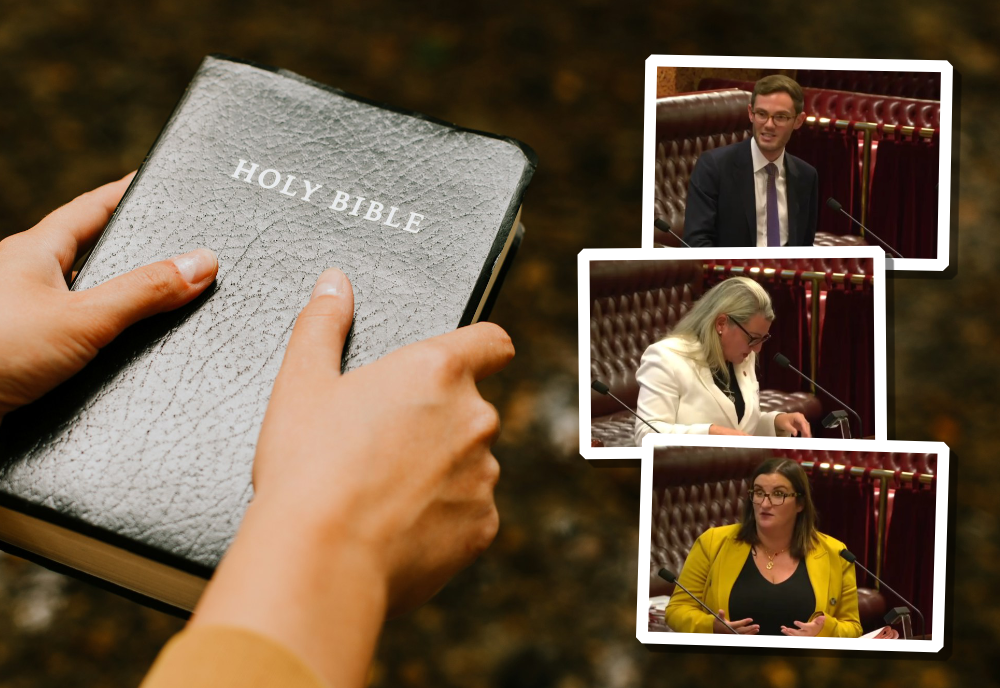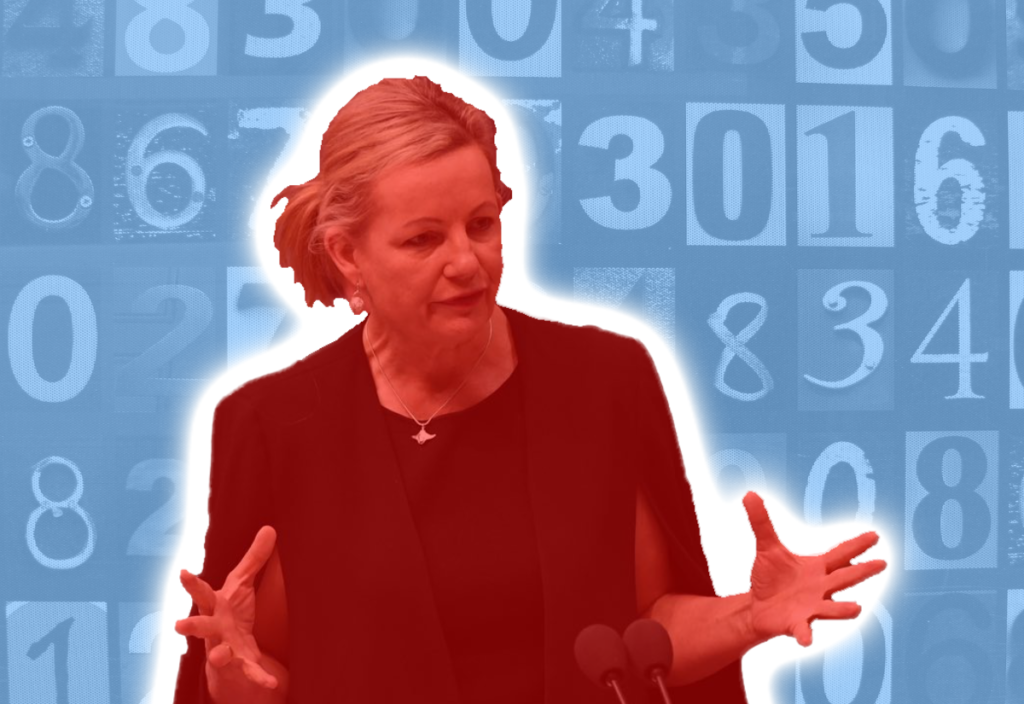Many parents at public schools will have little clue that their kids are being targeted as “souls to be saved” by churches and missionaries privileged enough to have access to our schools on the taxpayer’s dime.
Evidence is mounting that chaplains employed by religious labour-hire firms and appointed to schools under the National School Chaplaincy Program have an agenda of connecting children to out-of-school church activities. This is despite the Project Agreement between the federal government and states/territories expressly stating that chaplains must not proselytise.
When former chaplain Caragh Larsen attended a meeting of chaplains at Schools Ministry Group (SMG) – South Australia’s largest provider of chaplains under the National School Chaplaincy Program – she was shocked when her colleagues “praised and congratulated” a male colleague for having taken children from his school to a youth group where he was youth pastor.
“They were so excited … the reaction was just excitement and they were so happy for him to have done that,” she told The Secular Agenda podcast, published by the Rationalist Society of Australia (publisher of Rationale).
“It really floored me because, as far as I was concerned, that was just an absolute no-no. Actually, it did feel like they had an agenda.”
This case of a chaplain connecting school children to out-of-school activities appears to be far from an isolated one.
One former employee who worked in the evangelical and Pentecostal church networks has informed Rationale that chaplaincy providers deliberately target schools to grow local youth ministries.
The informant worked for a youth ministries organisation which was “controlled by Hillsong” and closely followed Hillsong’s methods and agenda. The organisation, the informant claimed, was aligned closely with Your Dream, a school outreach program that was transformed to focus on providing chaplains for public schools under the National School Chaplaincy Program. On its website, Your Dream says its school chaplaincy program has grown from “humble beginnings” of four schools in country New South Wales to now operate in more than 200 schools in five states.
“I can say from my experience that some smaller churches with less resources might co-employ someone as both a youth pastor at a church and also as a school chaplain, meaning they are accessing government funding, sometimes co-partnering with other local churches to employ this person alongside one or two days employed at a church,” the informant said.
“The model replicates in a smaller way, albeit the principles and most methods are the same (as the Hillsong model): get kids to a Friday night service where they make a ‘decision’, call them days later and make sure they join a small group, then the church.”
Over a coffee catch-up recently, the informant outlined for this author the strategy adopted by churches like Hillsong and the Australian Christian Churches network in targeting schools to grow their youth ministries. The usage of marketing concepts such as ‘segmenting’, ‘achieving scale’, ‘customer funnel’ and ‘metrics’ left little doubt about the slickness of the operation.
The usage of marketing concepts such as ‘segmenting’, ‘achieving scale’, ‘customer funnel’ and ‘metrics’ left little doubt about the slickness of the operation.
Youth pastors employed by churches lead a team of volunteers in conducting outreach activities – not just chaplaincy – in “geo-targeted” schools, with the aim of funneling children into out-of-school church activities and converting them to Christianity.
“It is highly organised, mission-led and meticulously reported back in terms of metrics. The key metric is ‘decisions’ – or ‘souls saved’. That means that a student makes a conscious decision to become a Christian,” the informant said.
“This mostly happens at a youth ministry service, such as a Friday night youth gathering held at church, where the music, atmosphere, lighting and impassioned preaching sets an optimal scene.”
Children who make ‘decisions’ are asked to complete a form in which they provide their phone number and other personal details. The form is then handed to an assigned group leader – again, geographically organised – for follow-up.
“The young person is called over and over to be invited back to gatherings and events. Over time, the young person obviously becomes part of the church community and contributes by leading their own small group.”
The informant said that parents were neither consulted nor asked for permission to have children attend such out-of-school activities, but acknowledged that the practice may have changed in recent years.
More evidence has surfaced online as to the clear missionary agenda of some school chaplaincy providers. In Queensland, chaplains are a conduit for recruiting children to participate in Scripture Union camps. Promotional material posted to the Facebook page of Coorparoo Secondary College on 26 August 2021 promised children “the time of your life” at a spring camp and urged them to contact the chaplain for more information.
This author has viewed promotional material from Kedron State High School in which the chaplain was the contact point for a 2015 Scripture Union camp aimed at years 10-12 students with the theme of ‘Metamorphis’. In small font at the bottom of a list of exciting activities, the tagline said: “Metamorphis is all about CHANGE. Let GOD change your LIFE from the inside out.”
On Facebook on 19 May this year, the Ripley Valley State Secondary College, in Queensland’s south-east, promoted a Youth Alive event at a local church. The post read: “Today the Youth Alive team visited RVSSC to engage with the students over some games and pancakes. Youth Alive have an alcohol and drug free event happening tomorrow night at Cityhope Church. If you want more information about this please contact our school chaplain … ”
In New South Wales, a manager from Generate Ministries last year spoke about the important role of a new regional manager in “looking after and supporting Christian school workers” – chaplains and scripture teachers – at public schools across the state. These workers, he said, were “engaging with whole school communities and seeking to connect them to local church and to ministry opportunities.”
Earlier this month, the director of Youth Alive in Victoria boasted that about a thousand teens had given “their life to Christ” at an annual rally that immediately followed a week in which 42 Youth Alive teams visited high schools for lunchtime performances and motivational workshops. Although, the role of chaplains is not clear in this case.
Christian labour-hire firms may not talk about the missionary opportunity so openly these days, but they were not so shy in the early years of the school chaplaincy program. In 2007, Tim Mander, chief executive of Scripture Union in Queensland (and now state Liberal-National MP), wrote in the foreword of The Chaplaincy Phenomena, a book by Joelle Kabamba, that the school chaplaincy program was “the church’s opportunity to make a connection with the one place through which every young person must pass – our schools”.
Duncan Brown, also a former CEO from Scripture Union, wrote on the back cover of the same book that the program was a “feeder ministry”, targeting “potential Christians and bringing them to God and into the church environment.”
So if taxpayer-funded chaplaincy providers have an active agenda of connecting children to church groups, why are Australia’s education ministers letting this blatant missionary work take place in our public schools?
There is currently a window of opportunity to change the school chaplaincy program. The federal Department of Education is completing a review of the program, ahead of an expected new Project Agreement between the federal government and the states/territories in regard to funding.
While federal education minister Jason Clare has pledged that a new-look school chaplaincy program would allow schools the option of a non-religious chaplaincy provider, schools would likely have little choice given the dominance of religious – overwhelmingly Christian – labour-hire firms in the marketplace.
If millions of taxpayer dollars continue to flow to third-party labour-hire firms that appoint only Christians to these chaplaincy roles, then our public schools will remain well and truly in the sights of missionaries. And then the answer to my question will, sadly, be clear: Australian governments continue to put the wellbeing of Christian missionaries ahead of the wellbeing of children in public schools.
If you wish to republish this original article, please attribute to Rationale. Click here to find out more about republishing under Creative Commons.
Photo by Hannah Busing on Unsplash.














